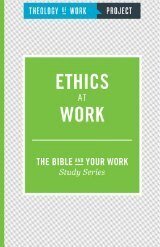Advent Church: Is the Era of Mega-Ministries Ending?
Blog / Produced by The High Calling
Ordering a coffee used to mean answering two questions: “Regular or decaf?” and “Black or cream and sugar?” Today Starbucks offers over 87,000 different drink combinations. For decades marketing gurus have said people want choices because customization empowers the individual. But when facing a menu with thousands of drink options, some feel overwhelmed rather than empowered. Psychologists call this the “tyranny of choice,” and it explains why the value of simplicity is on the rise.
As our society becomes more complex, people are drawn to simplicity. We see it in the success of Apple devices with their simple design and ease of use. A new generation of fast food has emerged rejecting McDonalds’ “something for everyone” menu. The austere “urban prairie” architecture of Chipotle restaurants, for example, matches the simplicity of its menu.
It appears the call to simplify has been heard by church leaders as well. In the last 18 months there has been a parade of ministry books celebrating the virtues of “lean,” “small,” “simple,” and “nimble” church, and the construction of larger church buildings is at an all-time low in the U. S.—a trend that started well before the Great Recession. The glamour of the mega-ministry and its ability to offer greater choices appears to be fading—at least in some regions. But is this shift anything more than a reflection of social trends?
I suspect changing social values play a part. Millennials, research shows, are suspicious of large institutions unlike Baby Boomers who equate largeness with legitimacy. Still, I wonder if we’re also witnessing a theological shift that is eroding the foundation of very large ministries (VLMs), while providing validation for leaner ones.
Part of what makes VLMs emerge is the belief in a sacred/secular divide. This view holds that the world is split into that which God cares about (sacred) and that which is ultimately unimportant (secular). Accounting, from this perspective, is secular work without any eternal value, but doing accounting for a church—well, now you’re counting beans for the kingdom of God. Rather than affirming the work of Christians serving as counselors, mechanics, or fitness trainers out in the community, ministries incorporate these activities in order to give them validation. Over time this desire to sanctify our work results in VLMs housing restaurants, auto repair shops, fitness centers, retail stores, clinics, and a plethora of programs for volunteers to staff.
Our age isn’t the first to grow VLMs in the soil of a sacred/secular divide. During the Middle Ages the massive institutional expansion of the Roman church was fueled by the same view that work outside the church didn’t ultimately matter. Every sphere of the culture—government, the arts, education, commerce, etc.—was sanctified by being brought within the church and under its control. Not until the Reformation, and it’s dismantling of the wall between sacred and secular, did things begin to change. Luther, Calvin, and their spiritual descendants affirmed a theology of vocation that said all of life, and all work, was sacred. Accounting mattered and brought glory to God even when done outside the church. This allowed the institutional church to shrink its footprint and simplify its ministry to preaching the Scriptures and administering the sacraments. It also empowered the laity to carry Christ’s presence into the various channels of the culture through their vocations, rather than forcing the entire culture into the church.
I suspect something similar is taking hold in the North American church today. After living with an assumed sacred/secular divide for decades and the resulting proliferation of VLMs, many are now questioning the divide. A new generation of church leaders and laity are restoring a vision for cultural participation and a renewed theology of vocation. They’re coming to see the value of their lives, work, and social engagement without the need to be a “ministry” or under the banner and control of an institutional church.
The side-effect is a new freedom for ministers to be pastors again rather than CEOs. When the laity is empowered and their vocations in the world are validated, pastors can abandon the pressure to grow and manage a VLM, and instead focus on their call to word and sacrament.
______________________________
Advent Church
It’s not a secret: sometimes it’s hard to find Jesus in church. Some of us have gotten used to the routine and the way things unfold in our weekly church services, and we just can’t seem to move beyond going through the motions. Others of us have been disappointed or we’ve become disenchanted, and we’ve decided to look for Jesus outside the church building. Others have gotten bored with the whole thing, and no longer expect to find Jesus in either the church or the Church. And then, there are those of us who find great comfort and deep meaning in both the church building and the Church of God.
Jesus built the church on Peter’s confession that Jesus is the Christ, the Son of Living God. Jesus pronounced that not even the gates of hell would prevail against it. Christ’s grace is at work in the church. And in the Church. In Advent Church, let’s celebrate the truth that Jesus is the Christ, the Son of the Living God, and let the Church say, “Amen.”
Featured image by Krissie Camealy. Used with Permission. Source via Flickr.





